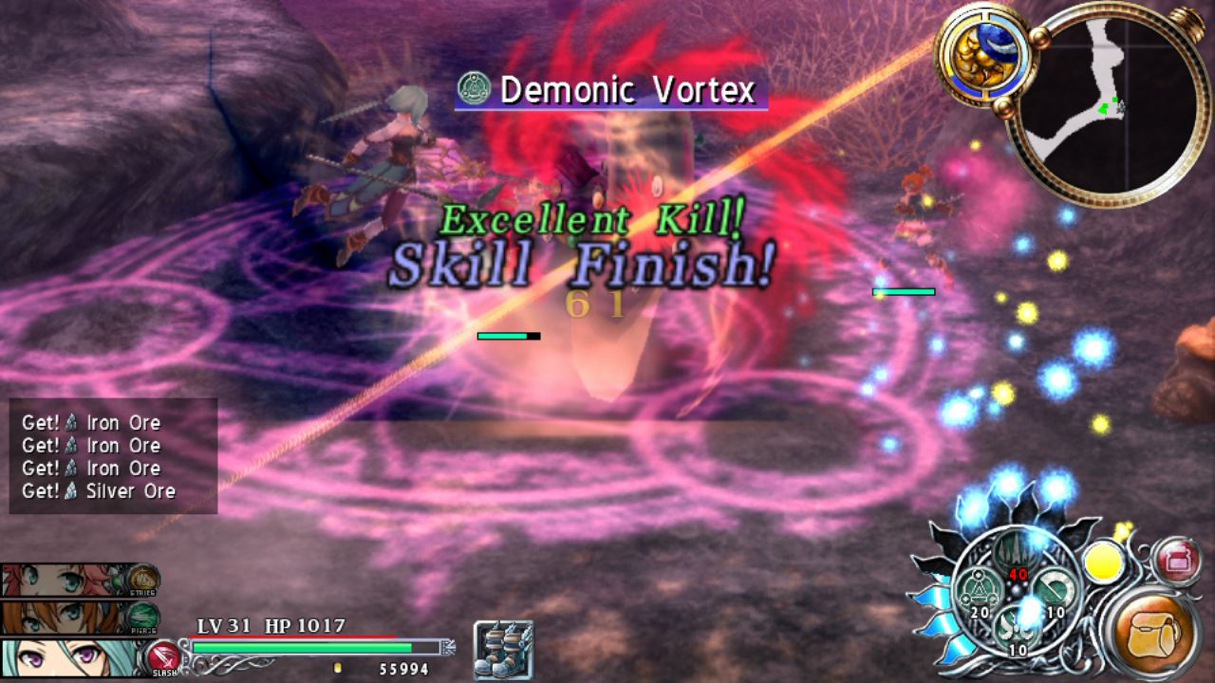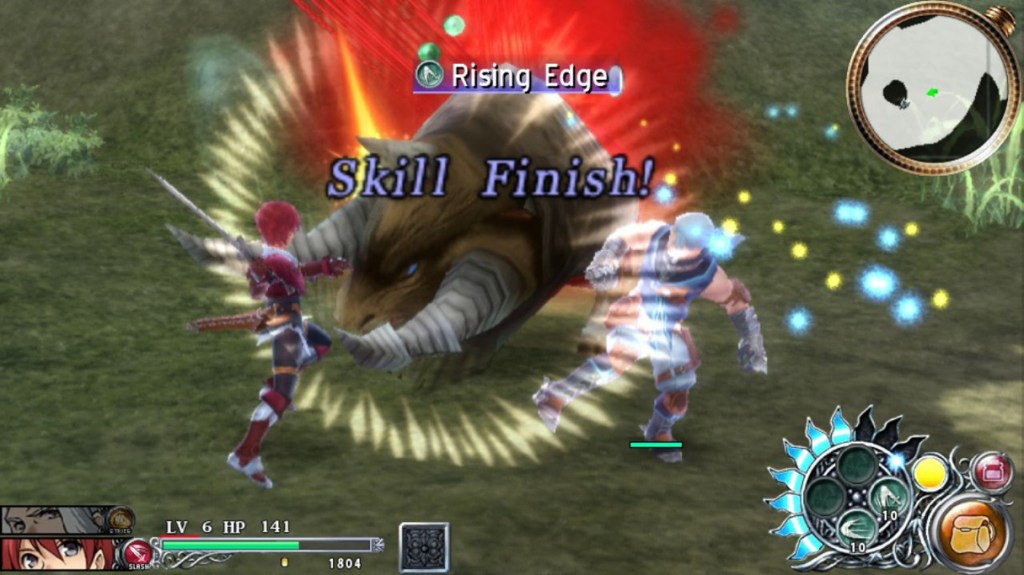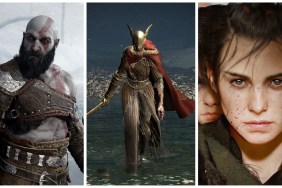Surely it Ys.
The Ys series is a little different from other early JRPG franchises; in early iterations, the programmers compared the gameplay to the enjoyment of popping bubble wrap. Since its inception, where combat involved bumping the sprite-based character into the sides and back of enemies, the game has evolved to the three-quarter view 3D actioner.
In the early nineties the fourth Ys game was farmed out to two different game companies for different platforms, Tonkin House and Hudson Soft, who produced very different games, Ys IV: Mask of the Sun and Ys IV: Dawn of Ys, both which took some liberties with Falcom’s source story. Mask of the Sun, was considered canon and remade for the PS2 in 2005 by Taito with the subtitle A New Theory. Ys: Memories from Celceta is a reimagining of Ys IV from the ground up, keeping basic plot elements but replacing the other games as the canonical title, while using the gameplay style and advances of 2009’s Ys Seven for PSP.
Celceta, like most games in the series, follows the same protagonist, Adol Christin, so a certain amount of this game feeling like an extended anime episode, or short story arc, can be forgiven a bit if you take it as one chapter in the character’s life story. It’s also not a bad place to come into the series, set between Ys II and III, as it begins with Adol’s memories having gone missing, and him needing to retrieve them by exploring the foreboding forest of Celceta, where he occasionally comes across something that jogs a recollection of his character background and the game’s overarching plot.
The plot is fairly standard, though it takes probably a good 8-12 hours to find it, since until then it’s simply about mapping the forest on the promise of a hefty monetary reward. Then there’s some of your usual stuff about a godlike being, hidden towns with mysterious technology, villainous betrayals, and the potential end of civilization “as we know it.” It’s not bad, but it’s not amazing either; if you like standard anime character tropes, Celceta will be right up your alley. Just don’t expect much in the way of character development or deep plot developments.
Graphically, Celceta is rather weak. It looks like it belongs on the PS2 or higher end PSP fare. It feels a bit like it was being developed for PSP, then ported to Vita with most of the same assets. None of this stops it from being a really great game, though.
Ys: Memories of Celceta plays fantastically. It’s an adventure in the old-school Zelda vein, but with more contemporary RPG leveling and combat, and a contemporary JRPG look. It’s centered around map exploration, with areas unlockable after getting the specific item needed from a dungeon. Though this is initially presented as open-world exploration, where you can go is very tightly controlled, and in the course of the plot you end up exploring most of the map. Exploration is blocked either by obstacles that require abilities that must be acquired from event locations or dungeons, or (early on) enemies at a much higher difficulty level.

Combat, which makes up the bulk of the gameplay, is hack and slash. You control the leader of a party of three. Different enemies have weaknesses that correspond to character attack types, and you can switch the party leader on the fly, in the middle of combat, for a better offense or defense. Dodges and blocks, matched to enemy attacks confer bonuses, which are especially helpful in boss fights. It’s all fast and intuitive, and most importantly, fun.
This is especially true once skills, up to four special attacks that you can set, from a large number that each character can learn, come into play, drawing from a refillable SP gauge. Kill enough enemies, or use skills that fill up an ability meter, and the player can use the leader’s special skill, a super potent attack that spins from one enemy to the next before delivering a large area of effect attack. Additionally, secondary characters will infrequently use their own independent skills.
Celceta may have the best use so far of the Vita’s touchscreen, with intuitive menus and on-screen prompts. All of these same features can be navigated with the analog stick and buttons, but it’s actually easier to use the touchscreen. The back touchpad can be used to redirect your companions, the fighters you aren’t controlling, in an evasion or attack-based “focus,” which is especially useful during boss fights.

Speaking of, boss fights are the highlight, with bosses having varying attack patterns, styles, and weak points, all of which require different strategies. The one caveat is that a good number of them can be cheap, knocking the party leader down and continuously attacking before he or she can get back up. You can almost always switch on-the-fly to another character who isn't caught in the attack radius, but it still feels cheap and frustrating, especially if you’re using a character whose attacks are well-matched to the enemy. This also means the bosses represent a great challenge and change from the regular enemies, who have much simpler attack patterns.
Most importantly, Ys: Memories of Celceta is fun. The anime plot perfectly sets up the action-oriented gameplay, the combat is well-balanced without much need for grinding to advance in levels, and the boss fights are challenging. It comes in between 25-30 hours, with little extra content outside of the main narrative. There are side missions, but most of them can be achieved on your way to story goals or inside the towns they are issued from. It feels extensive too, especially for a handheld action-RPG.
Ys: Memories of Celceta is graphically a little weak, the characters are underdeveloped, and the bosses are cheap, which are the kind of beauty mark-like imperfections that draw attention to how fantastic it is as an actual game. It doesn’t need extensive side missions, a sprawling mind-bending plot, or the full graphic capability of the Vita, because it’s just so much fun, which is why it’s garnering the reputation as a must-have for Vita owners.
-
Fantastic gameplay
-
Anime plot perfectly sets up gameplay
-
Fun combat
-
Graphically weak
-
Weak characters
-
Cheap bosses, but otherwise great boss fights
-
Great Vita interface











